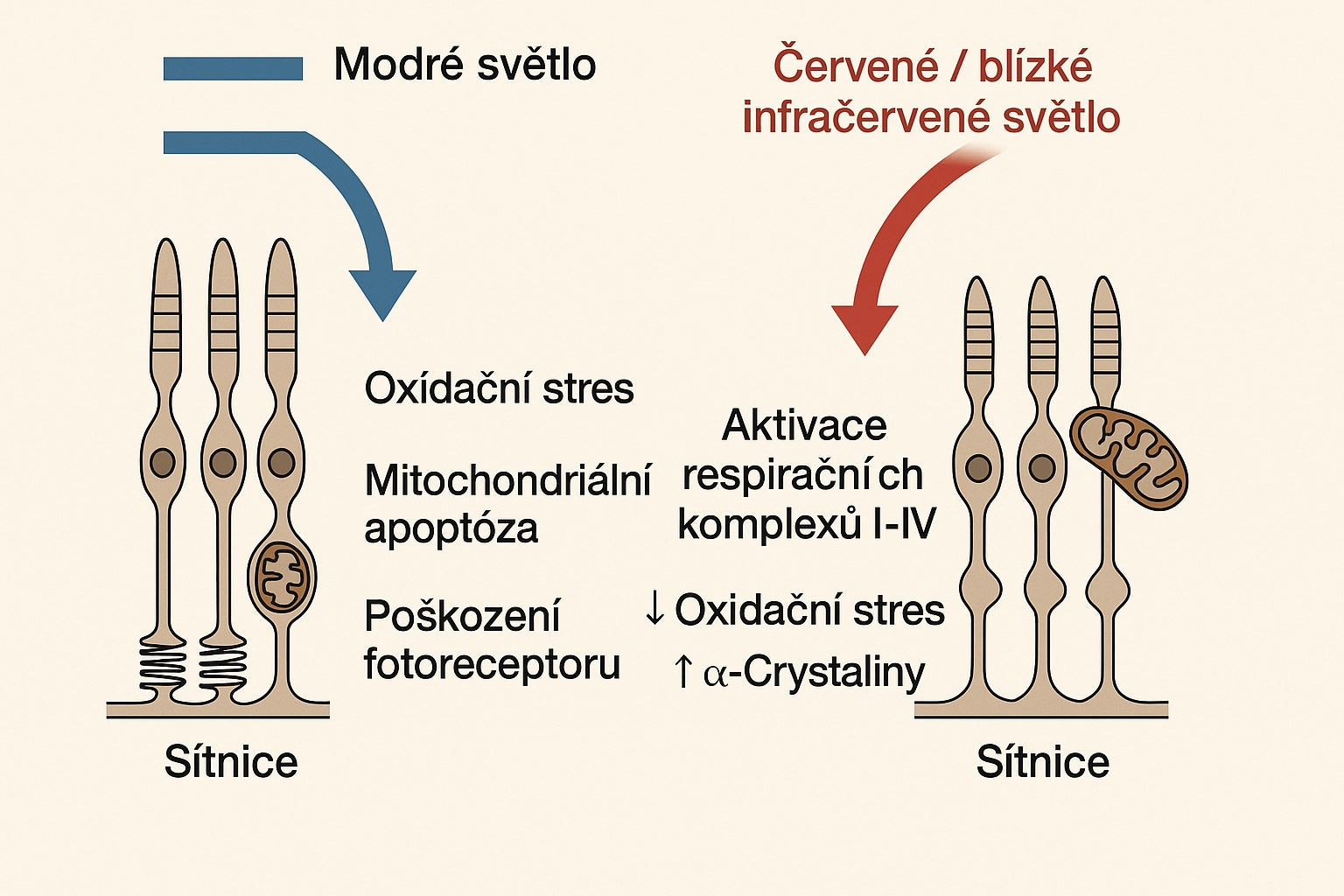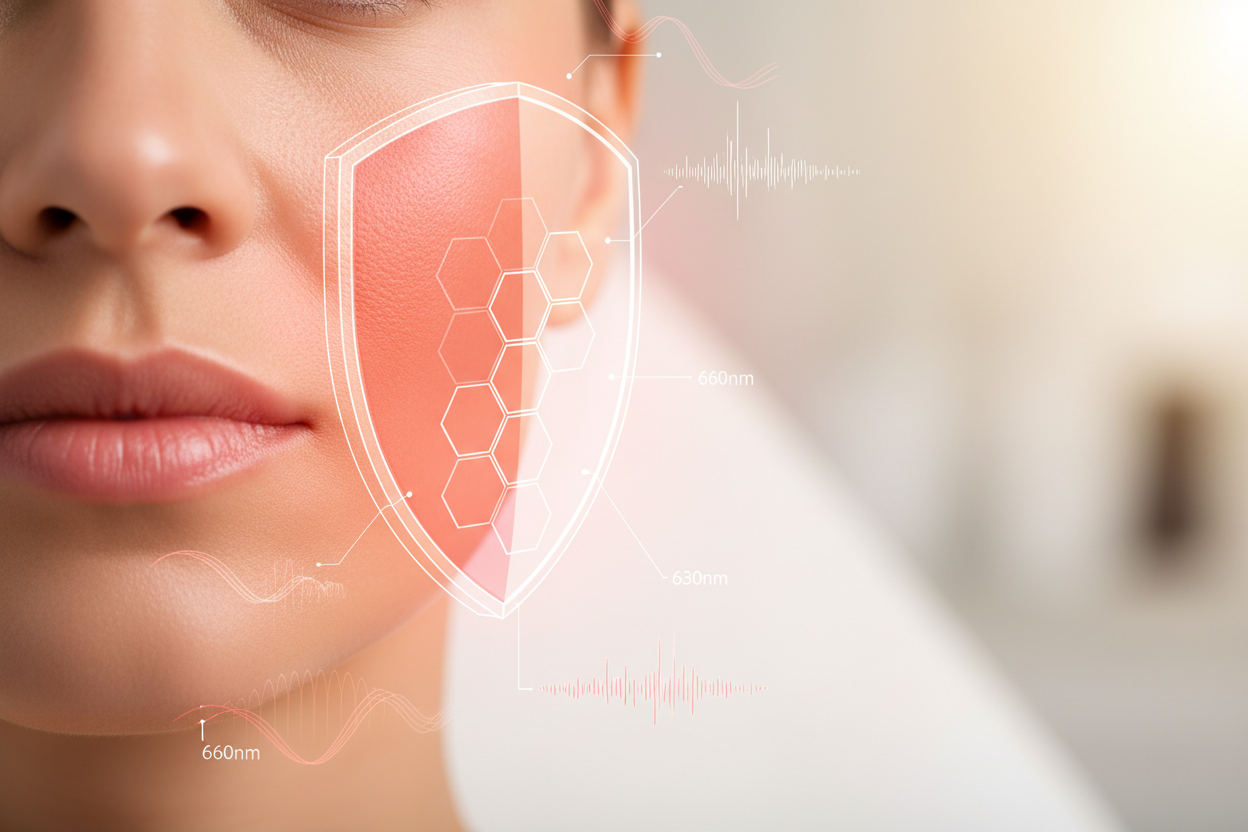
How red and infrared light protect the retina from blue light
Introduction – why this study was created
Today’s digital age exposes us extremely to blue light (e.g., from screens), which in high doses can damage photoreceptors – cells in the retina sensitive to light. Previous research promises protection thanks to red (670 nm) or near-infrared (810 nm) light, but the effects have so far lacked a detailed molecular explanation. .
What exactly did the study do
-
Used primary mouse retinal cells, first damaging them with strong blue light (BL).
-
-
The analysis was carried out within a few hours and in detail:
-
early changes (oxide stress),
-
late processes (mitochondrial function, apoptosis, gene activity).
The damage was then "treated" either with 10 minutes of red (RL, 670 nm) or infrared (NIRL, 810 nm) light.
-
-
Main findings
-
Not only complex IV, but also complexes I and II: Previous theories considered complex IV (cytochrome c oxidase) as the main target – however, studies have shown that both red and NIR light also activate complexes I and II, thereby improving mitochondrial respiration and ATP production .
-
Reduced oxidative stress and cell preservation: Damaged cells exhibited significantly lower oxidative stress and fewer signs of mitochondrial apoptosis (e.g., lower activity of Bax, Caspase-9) .
-
Genetic response – α-crystallins: The study found increased expression of α-crystallins, proteins with a protective function – suggesting the restoration of the protective environment at the mitochondrial level .
Why is it important
-
Expands our understanding: not only complex IV, but also other smaller respiratory complexes are key to the PBM (photobiomodulation) effect.
-
Supports the therapeutic potential of red & infrared light – the foundation for future therapies against degenerative retinal diseases.
What next?
-
The study was conducted in vitro (in laboratory conditions with mouse cells). The next step is in vivo tests and clinical trials in humans.
-
It is necessary to verify the appropriate dosage, frequency of exposure, and safety for long-term use.
In conclusion
This study provides strong evidence that red (670 nm) and near-infrared (810 nm) light activate mitochondrial respiratory complexes I, II, and IV, significantly reducing photoreceptor damage caused by blue light. This discovery paves the way for modern, non-toxic methods of vision protection—whether in preventing digital eye strain or in treating degenerative retinal diseases.
link to the study: https://pmc.ncbi.nlm.nih.gov/articles/PMC7177783/



Leave a comment
This site is protected by hCaptcha and the hCaptcha Privacy Policy and Terms of Service apply.